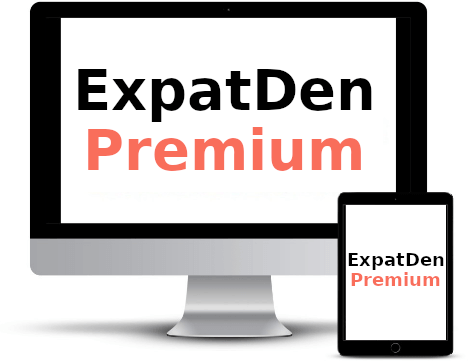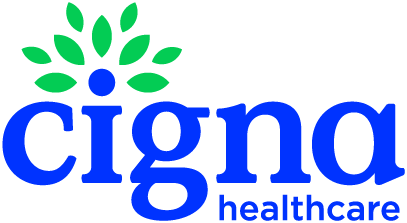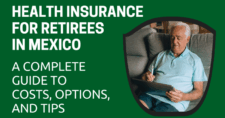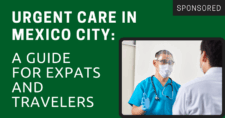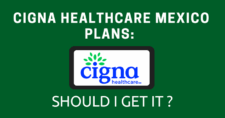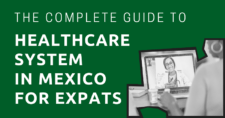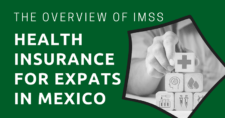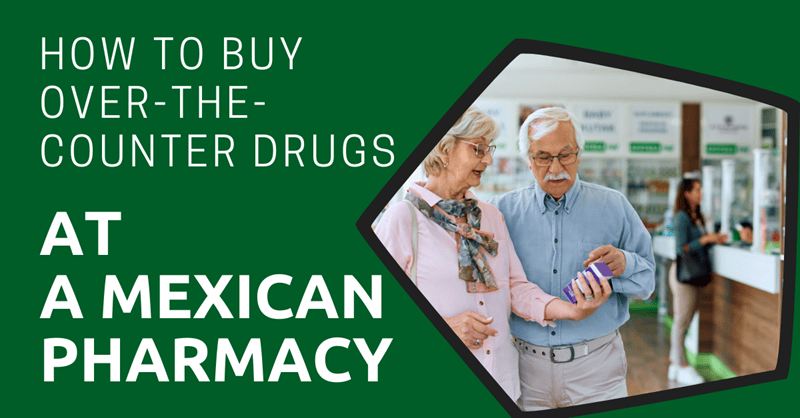
Mexico is the world’s 15th largest consumer of pharmaceutical drugs. Drugstores, almost as ubiquitous as Oxxos (Mexico’s equivalent to 7-11), allow the purchase of most medications without an official prescription.
About 400 laboratories in the country manufacture pharmaceuticals, with 20 of the world’s top 25 pharmaceutical companies maintaining a local manufacturing presence. The U.S. is Mexico’s largest supplier of foreign-made medications, exporting approximately $875 million per year in pharmaceuticals.
If you plan to live or spend extended time in Mexico, understanding how Mexican drugstores operate can be beneficial when you feel under the weather. Here are some basic tips and insights on dealing with drugstores in Mexico.
In addition to buying pills, you can also use Air Doctor to book an appointment with an English-speaking doctor, either online or at a nearby clinic. It’s a great option if you want to talk to a real doctor before taking any medication or need a prescription tailored to your condition.
This article will take approximately 15 minutes to read. Don't have the time right now? No worries. Email the ad-free version of the article to yourself and read it later!
Disclaimer: This article may include links to products or services offered by ExpatDen's partners, which give us commissions when you click on them. Although this may influence how they appear in the text, we only recommend solutions that we would use in your situation. Read more in our Advertising Disclosure.
Contents
- How Drugstores in Mexico Operate
- Safety Guidelines for Buying Medications in Mexico
- Mexico Vs. US Prices
- Do You Need a Prescription?
- How to Get a Prescription in Mexico
- Best Places to Get a Prescription Drug in Mexico
- Brand-Name or Generic Medicine?
- How to Find a Trustworthy Drugstore in Mexico
- The Best Online Drugstores in Mexico
- Can You Bring Medications Back into the U.S.?
- Now, on to You
How Drugstores in Mexico Operate
Drugstores are an important part of the healthcare system in Mexico.
There are two main types of drugstores in Mexico: smaller, independently-owned ones and larger drugstore franchises.
Smaller drugstores, often opened by wealthy individuals and sometimes run as a family business, are commonly found interspersed with other small businesses in commercial areas. Their prices are usually slightly higher than those in larger chains.
Drugstore franchises are typically large and prominent. They are often located in malls, on busy street corners, or in residential areas as standalone buildings.
In Mexico, there are no specific laws about who can open or own a drugstore. However, laws do prohibit physicians from practicing or prescribing inside one. To circumvent these laws, many drugstores form arrangements with nearby clinics or individual practices to refer patients. Numerous drugstores also feature a walk-in clinic in a small, attached building on the same property, with a distinctly separate entrance.
These clinics can assess your condition and prescribe necessary medications inexpensively, despite any potential conflicts of interest.
Most clerks at Mexican drugstores lack significant clinical expertise, though they typically have access to comprehensive prescription drug manuals like the Physician’s Desk Reference. Some clerks are very knowledgeable and offer reliable recommendations, while others may not differentiate between aspirin and acetaminophen.
Mexican drugstore practices vary widely, with some adhering to strict corporate rules requiring comprehensive documentation for every sale, while others may dispense almost any medication with a persuasive request and sufficient cash.
Most of Mexico’s biological and pharmaceutical chemistry graduates (QFBs) enter the manufacturing industry rather than working in drugstores.
About a third of Mexico’s drugstores employ a full-time QFB. These certified professionals must complete a five-year degree program and pass COFEPRIS certification exams covering pharmacology, drug interactions, and Mexican pharmaceutical law.
QFBs must also be on hand when medications that are classified as controlled substances are given to customers. They also manage the storage of temperature-sensitive medications.
Legal regulations only require drugstores selling controlled substances to have a QFB on site for a few hours each week.
According to Mexico’s Ministry of Health, pharmacy license requirements vary by state, but all pharmacies must keep updated inventories of controlled substances they carry and report them to COFEPRIS quarterly.
The WHO’s Good Pharmacy Practice guidelines, which Mexico has adopted, emphasize that pharmacies should also have trained employees who can provide drug information to customers.
Medications in Mexico are typically prepackaged in neat little boxes, with pills individually sealed in blister packs instead of in plastic bottles.
Safety Guidelines for Buying Medications in Mexico
Before you buy any medications in Mexico, it’s important to know the safety considerations.
The Centers for Disease Control and Prevention (CDC) warns travelers about potential risks when buying medications abroad, including counterfeit drugs, substandard manufacturing, and medications that haven’t been approved by the FDA. The CDC specifically recommends that travelers bring enough prescription medications from home to last their entire trip.
The U.S. Embassy in Mexico has issued health alerts about contaminated or counterfeit medications found in some Mexican pharmacies, particularly those targeting tourists near border areas. These fake medications may contain dangerous substances or incorrect dosages.
Key safety recommendations from health authorities include:
- Verify pharmacy credentials: Look for COFEPRIS registration numbers displayed prominently.
- Check medication packaging: Legitimate Mexican medications have tamper-proof seals and clear labeling.
- Avoid medications without proper labeling: All legal medications must show expiration dates, batch numbers, and manufacturer information.
- Be cautious of unusually low prices: If a medication costs significantly less than other pharmacies, it may be counterfeit.
- Consult healthcare professionals: Always speak with a qualified doctor or pharmacist before trying new medications.
The FDA also notes that importing unapproved drugs into the U.S. can pose serious health risks, as these medications haven’t undergone the same safety and efficacy testing required for U.S.-approved drugs.
Mexico Vs. US Prices
You can save a lot of money when buying prescriptions in Mexico as opposed to the U.S. Here are typical costs as of July 2025:
Diabetes Medications:
- Insulin (generic): $25 to $40 Mexico vs. $250 to 300 U.S.
- Metformin: $12 Mexico vs. $85 U.S.
Cardiovascular Medications:
- Lisinopril (30 tablets): $8 Mexico vs. $45 U.S.
- Atorvastatin: $15 Mexico vs. $120 U.S.
Other Common Medications:
- Generic Viagra (sildenafil): $2 to $4 per pill Mexico vs. $70 U.S.
- Omeprazole: $6 Mexico vs. $35 U.S.
- Tramadol: $10 Mexico vs. $60 U.S.
Keep in mind that prices vary between pharmacies, and tourist locations near borders often charge 20 to 30 percent more than local pharmacies. The most significant savings typically come from chronic medications that you’d purchase regularly, where the price difference can save hundreds or thousands of dollars every year.
Do You Need a Prescription?
In most of Mexico, prescriptions are strictly enforced only for antibiotics and controlled narcotics known to cause dependencies, such as opioids and some sleep and anti-anxiety medications.
If you encounter a drugstore willing to sell addictive pharmaceuticals, like Oxycodone, Percocet, Xanax, Ativan, etc., without a prescription, you should approach both the store and the drugs with a healthy dose of skepticism. It’s technically required to show a prescription when purchasing antibiotics, but occasionally, some smaller drugstores may still sell them over the counter.
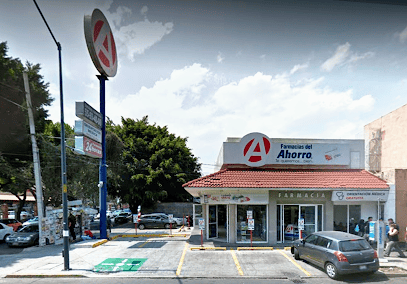
There are also many medications requiring prescriptions in other countries that Mexico doesn’t regulate heavily, including:
- Pain relief medications like Tramadol
- SSRIs and other antidepressants such as Wellbutrin and Celexa
- High blood pressure medications like Atenolol and Lisinopril
- Cholesterol-reducing medications like Simvastatin
- Insulin and other diabetes medications
- Digestive medications like Omeprazole
- Medications that treat erectile dysfunction, such as Viagra
- Birth control pills
- Corticosteroids like Prednisone
- Anti-parasitic medications like Ivermectin
Of course, vitamins, supplements, and other generally over-the-counter medications are readily available without paperwork at any Mexican drugstore.
For prescription medications classified as controlled substances, Mexican law states that you must submit specific documents:
- Your full name and address
- Prescribing physician’s COFEPRIS registration number
- Diagnosis code
- Exact medication strength and quantity,
All of this info must be written on anti-fraud security paper. Pharmacies must keep these records for five years and make them available for inspection.
How to Get a Prescription in Mexico
If you want to find more about this topic, check out our exclusive article on How to Buy a Prescription Drug from Mexico.
If you need to refill a medication for which you have a prescription from another country, you can bring your foreign prescription or empty pill bottle to a doctor in Mexico. They will review it and write you a valid Mexican prescription for a small fee.
If you don’t have a foreign prescription or pill bottle, it’s easy to arrange a medical consultation with a general practitioner or specialist to have your case reviewed and the right medication prescribed. You can also explain your problem to the medical professional in the walk-in clinic attached to a drugstore, and they will typically issue you a prescription that you can fill in the store.
This method is effective for obtaining antibiotics but less so for acquiring opioids and other addictive pharmaceuticals. Controlled substances like these are difficult to obtain in Mexico, and you can usually only purchase them legally with a prescription from an authorized doctor at a licensed drugstore linked to a hospital.
Best Places to Get a Prescription Drug in Mexico
This is one of the exclusive pieces of content created for our Premium subscribers. To read and unlock all of them, please become a Premium member.
Doing so helps ExpatDen to continue to create and publish free, longform guides on living, retiring, or starting businesses abroad without ruining your reading experience with ads and banners.
Brand-Name or Generic Medicine?
According to Mexico’s Secretary of Economy Tatiana Clouthier, over 90% of all medications sold in the country are generic. The widespread availability of non-branded medicine helps ensure low-income and rural communities can afford the treatments they need.
Since 2010, all generic medications sold legally in Mexico must undergo rigorous bioequivalence testing.
As a result, the popular generic drugstore franchise Farmacias Similares invested millions of dollars to test their entire lineup, with other manufacturers quickly following suit.
Today, Mexico’s Federal Committee for Protection from Sanitary Risks (COFEPRIS), responsible for overseeing compliance with medical laws, certifies that most generic medications have received bioequivalence approval for quality and dosage, differing only in minor aspects such as shape, color, and packaging.
In 2022, the Mexican government amended its General Health Law to require that all medical prescriptions, marketing, and other references use the generic name when referring to a medication, rather than a specific brand name.
This practice, endorsed by the World Health Organization (WHO), makes most local medications much more affordable than their equivalents in the U.S. However, imported pharmaceuticals are often slightly more expensive than in the U.S.
How to Find a Trustworthy Drugstore in Mexico
In general, the most trustworthy Mexican drugstores are the nationwide franchises, as they are the most highly regulated and supervised.
You can usually trust the pharmacy sections in large department stores like Walmart and Costco.
If you want a local recommendation, you can ask any independent general practitioner in town which drugstores they consider reliable.
You can also ask your health insurance provider.
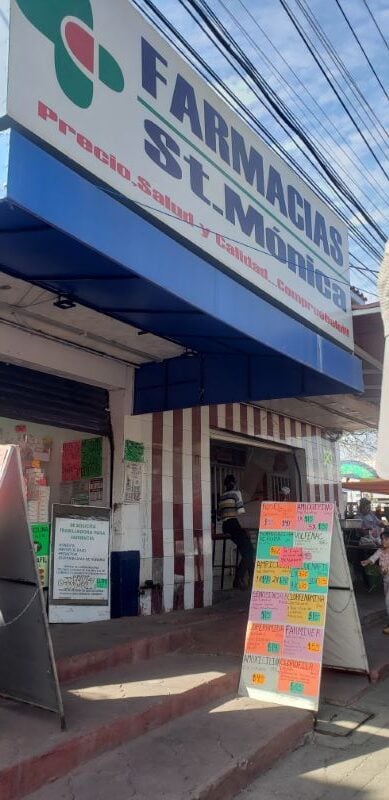
Try to avoid tourist-oriented drugstores that push popular American pharmaceuticals like Viagra and Vicodin with blatant English marketing.
Here are a few of the most trustworthy drugstores in Mexico:
- Farmacias del Ahorro, established in 1991, now has 1,600 locations across Mexico.
- Farmacias Benavides has over 700 branches in 20 Mexican states and is part of Walgreens Boots Alliance’s International Retail Division, lending it global reliability.
- Farmacias Similares, a generic-only franchise, operates more than 9,600 stores in Mexico and Chile. It offers a 25% discount on all items every Monday.
- Farmacias Guadalajara, also known as Super Farmacia, has over 1,700 branches around Mexico and offers around-the-clock home deliveries.
- Farmacia San Pablo, a self-service drugstore franchise with a home delivery system, is located in Mexico City, Queretaro, and Puebla.
You’ll find similar pricing in most of the above drugstores, with the exception of Farmacias del Ahorro and Farmacias Similares.
Farmacias del Ahorro sells a line of generic medications that are cheaper than the brand-name drugs found in most other franchises, and the generics sold by Farmacias Similares are known for being the most affordable drugs available.
The Best Online Drugstores in Mexico
Some trustworthy physical drugstores also have strong online presences, while some of Mexico’s best digital drugstores are exclusively online.
Here are a few of Mexico’s most reliable online drugstores:
Prixz is known as Mexico’s largest online-only drugstore franchise. It has expanded its online presence through partnerships with online retailers like Amazon, Mercado Libre, and Cornershop, as well as delivery apps like Rappi.
Its AI-based compliance feature allows you to scan and verify your prescription, enabling Prixz to deliver most prescribed medications to your doorstep. Required information includes the prescribing doctor’s name, institution of origin, specialty, and identification number, as well as the drug’s name, dosage, and formula. Prescriptions for antibiotics require a digital signature, while other controlled medications have stricter signature requirements.

In addition to Prixz, there are many reputable online drug stores in Mexico including:
This is one of the exclusive pieces of content created for our Premium subscribers. To read and unlock all of them, please become a Premium member.
Doing so helps ExpatDen to continue to create and publish free, longform guides on living, retiring, or starting businesses abroad without ruining your reading experience with ads and banners.
Can You Bring Medications Back into the U.S.?
If you have any prescription medications with you while crossing back into the U.S., you’ll need to declare them at customs.
This also applies to medications that are controlled in the U.S. but not in Mexico. If a border agent finds an undeclared controlled medication in your luggage, they may confiscate it.
Here are a few more rules to be aware of when returning to the U.S. with medications purchased in Mexico:
- Prescribed medications must be in their original labeled containers.
- Bring your prescription or a note from your physician stating that you need the medications while traveling and are using them under your doctor’s supervision.
- Bring only a reasonable amount for personal use.
- If you have a medication that is legal in Mexico but hasn’t been approved by the U.S. Food & Drug Administration (FDA), you won’t be allowed to bring it into the U.S. unless you adhere to these guidelines:
- The medication must treat a serious condition for which no other effective treatment is available.
- It must not pose an unreasonable risk.
- You cannot bring more than a three-month supply.
- You must provide a written statement affirming it’s for your personal use only.
- You must also provide the name and address of the U.S. physician overseeing your treatment or evidence that the medication will be used to continue a treatment begun overseas.
Now, on to You
Drugstores in Mexico can be a good way to find essential medications at a lower cost, as long as you understand how to find reliable providers and avoid tourist traps.
You can purchase most legal drugs without a prescription, but if you genuinely need antibiotics or other controlled substances, prescriptions are easy to obtain from most local physicians and clinics.
Most medications sold in Mexico are generic alternatives to popular brand-name drugs, and you’ll generally receive comparable quality while spending much less than you would in the U.S. If you plan to bring medications purchased in Mexico back to the U.S., make sure you understand and comply with the relevant U.S. regulations to avoid confiscations and other consequences.
